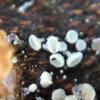
09-01-2026 17:41
Arnold BüschlenHallo, F. dilatata wird von vielen Bryoparasiten

10-01-2026 20:00
Tom SchrierHi all,We found picnidia on Protoparmeliopsis mur

07-01-2026 22:22
 Danny Newman
Danny Newman
Tatraea sp. on indet. hardwood The Swag, Great Sm

10-01-2026 01:18
 Danny Newman
Danny Newman
cf. Neovaginatispora fuckelii on indet. shrub Pre

07-01-2026 10:24
 Danny Newman
Danny Newman
Pezicula sp. on indet. hardwood Appalachian Highl

09-01-2026 10:08
 Blasco Rafael
Blasco Rafael
Hola, en el mismo habitat que la anteriorRetamaDia

08-01-2026 21:22
 Blasco Rafael
Blasco Rafael
Hola, He recogido esta muestra de Orbilia sobre Re

07-01-2026 17:29
 Marc Detollenaere
Marc Detollenaere
Dear Forum,On a barkless Populus I found some smal

10-11-2021 17:33
 Riet van Oosten
Riet van Oosten
Add-on topic http://www.ascofrance.com/forum/7059

07-01-2026 10:05
 Danny Newman
Danny Newman
cf. Chaetospermum on XylariaCosby Campground, Grea
Capitotricha from California
Alan Rockefeller,
03-07-2018 13:21
 I sequenced this little montane asco from a conifer stick that I expected to turn out to be Lachnum - However the ITS sequence came back and it appears to be a Capitotricha.
I sequenced this little montane asco from a conifer stick that I expected to turn out to be Lachnum - However the ITS sequence came back and it appears to be a Capitotricha.I just did a bit of microscopy on it. Macro and micro photos are available at https://mushroomobserver.org/317633.
The microscopy is all in Melzer's, and everything is inamyloid. Spores are very long and narrow.
ITS sequence: https://www.ncbi.nlm.nih.gov/nuccore/MH511099
Any thoughts on this?
Hans-Otto Baral,
03-07-2018 17:19

Re : Capitotricha from California
Hi Alan
very interesting case. The hair morphology is clearly that of a Capitotricha. Did you see any crystals on the hairs? Did you measure the spores? They look quite normal for the genus. I do not understand your statement of very long and narrow spores, are you sure you put the right ascus and spores photos?
A pity that you mounted oin MLZ!!! Important would be to check the ascus apex in Lugol for possible hemiamyloidity (or KOH-pretreated if you don't have Lugol) and the ascus base for croziers (in KOH and/or Congo Red).
Now, your sequence belongs to "Lachnellula" cervina, which in fact falls in Capitotricha. It is a species with 48-65 x 1.5 µm large spores on Betula branch (type, Dennis 1963: 338).
You get this result when testing the ITS in the CBS database:
http://www.westerdijkinstitute.nl/Collections/BioloMICSSequences.aspx
This is a find from USA Oregon, on Alnus rubra dead twig.
There is only 1 nt difference. This suggests that your sequence belongs to a fungus with very long, filiform spores.
But I must say I have a little doubt because C. bicolor on Alnus viridis (LT904858) is very close to it.
Zotto
very interesting case. The hair morphology is clearly that of a Capitotricha. Did you see any crystals on the hairs? Did you measure the spores? They look quite normal for the genus. I do not understand your statement of very long and narrow spores, are you sure you put the right ascus and spores photos?
A pity that you mounted oin MLZ!!! Important would be to check the ascus apex in Lugol for possible hemiamyloidity (or KOH-pretreated if you don't have Lugol) and the ascus base for croziers (in KOH and/or Congo Red).
Now, your sequence belongs to "Lachnellula" cervina, which in fact falls in Capitotricha. It is a species with 48-65 x 1.5 µm large spores on Betula branch (type, Dennis 1963: 338).
You get this result when testing the ITS in the CBS database:
http://www.westerdijkinstitute.nl/Collections/BioloMICSSequences.aspx
This is a find from USA Oregon, on Alnus rubra dead twig.
There is only 1 nt difference. This suggests that your sequence belongs to a fungus with very long, filiform spores.
But I must say I have a little doubt because C. bicolor on Alnus viridis (LT904858) is very close to it.
Zotto
Hans-Otto Baral,
07-07-2018 21:47

Re : Capitotricha from California
Hi Alan
I wonder if you could find out anything about this case.
Zotto
I wonder if you could find out anything about this case.
Zotto
